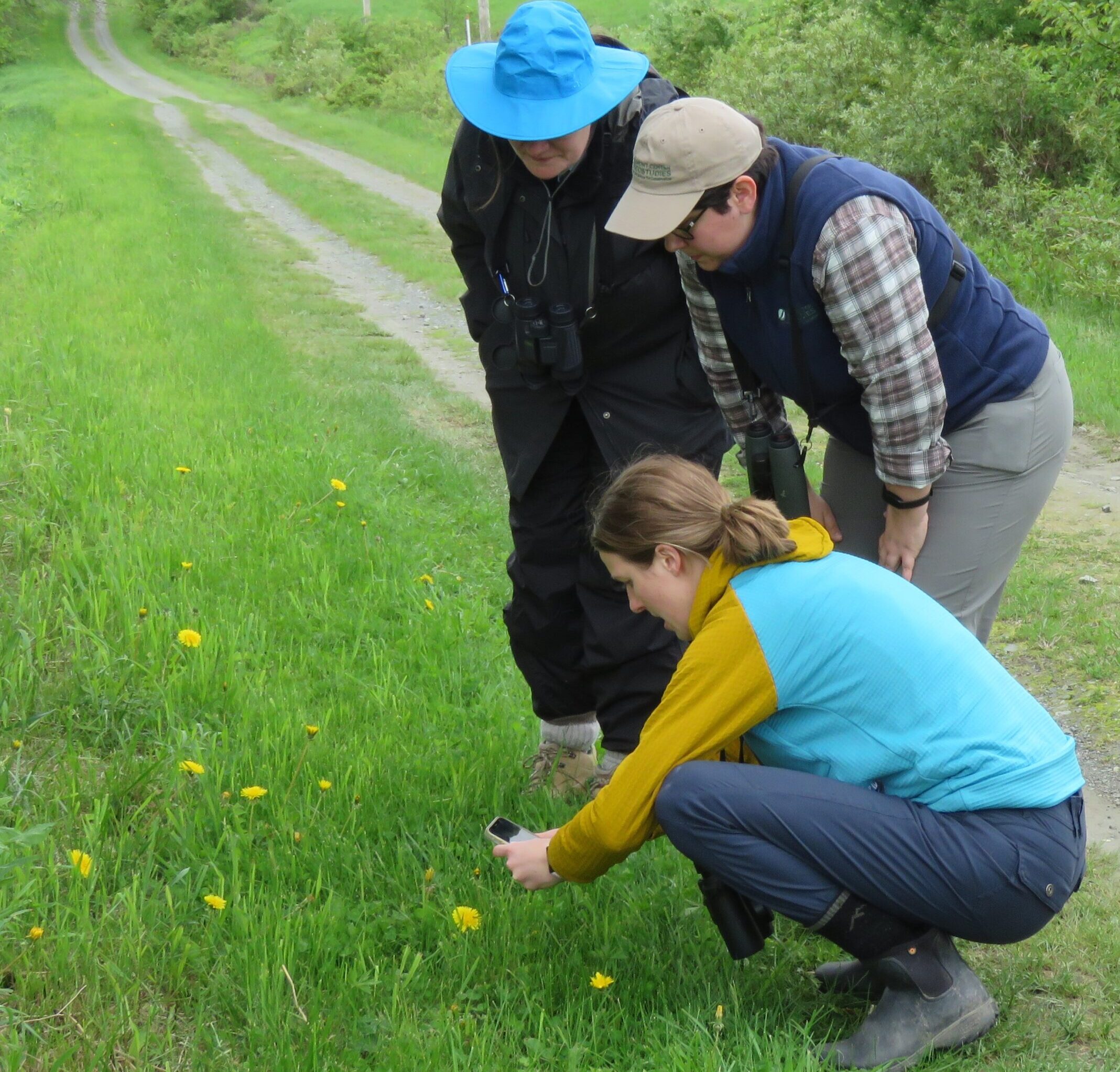
VCE staff Laura Prothero, Megan Massa, and Emily Anderson iNatting at Windsor Grasslands © Franni Hoag
Renowned writer and naturalist Henry David Thoreau had no notion of climate change when each year he meticulously recorded the first day that wildflowers bloomed and trees leafed out near his cabin. But 150 years later, these data were instrumental for documenting the ecological impacts of a warmer world.
In the past, many scientists viewed the data that they collected as something belonging to them, sometimes guarding it zealously out of fear that they would be scooped by another scientist or with a sense that the data reflected too much hard work to simply give away. The result was a significant loss of potential insights, simply because we can seldom anticipate how our data might be further used—now and in the future—if it were made accessible to others.
Since VCE’s inception in 2007, we’ve recognized that sharing data is in everyone’s best interest and have committed to archiving all of our scientific data on publicly available repositories for open access. The scope of time and funding, as well as a substantial shift in how we as scientists think about our work. We believe that the benefits of open scientific data outweigh the costs, and we are proud to be at the vanguard.
The concept of sharing data isn’t completely new, but it was impeded for decades by a lack of not only infrastructure, such as hardware, software, networks, and processes, but also common standards. For example, the World Wide Web (which you know as the www at the beginning of website URLs) was conceived as a way to share scientific data through a shared system with a universal protocol.
Today, infrastructure and standards have come a long way, interconnected through the web and now shared under the principles of FAIR data. First proposed by a group of scientists in a 2016 article in the journal Scientific Data, FAIR stands for Findable, Accessible, Interoperable, and Reusable. It is now widely accepted.
The Global Biodiversity Information Facility (GBIF), an international network and research infrastructure funded by the world’s governments, is a large part of this open-data culture. It aims to provide anyone anywhere open access to data about all types of life on Earth. The GBIF network brings all these data sources together through the use of biodiversity data standards that each provider follows.
VCE’s Vermont Atlas of Life has been a GBIF biodiversity data publisher since 2018. Publishers like us provide open access to datasets using machine-readable Creative Commons license designations, allowing scientists, researchers, and others to apply the data in thousands of peer-reviewed publications and policy papers each year.
With each new dataset, I ask myself how our data collected today might be used far into the future. But even today’s analyses—which cover topics from the impacts of climate change and the spread of invasive and alien pests to priorities for conservation and protected areas, food security, and human health—would not be possible without this worldwide collaborative effort.
Read the entire Fall 2025 issue of Field Notes, fresh off the press, here. If you would like to receive a physical copy of the magazine, email .
